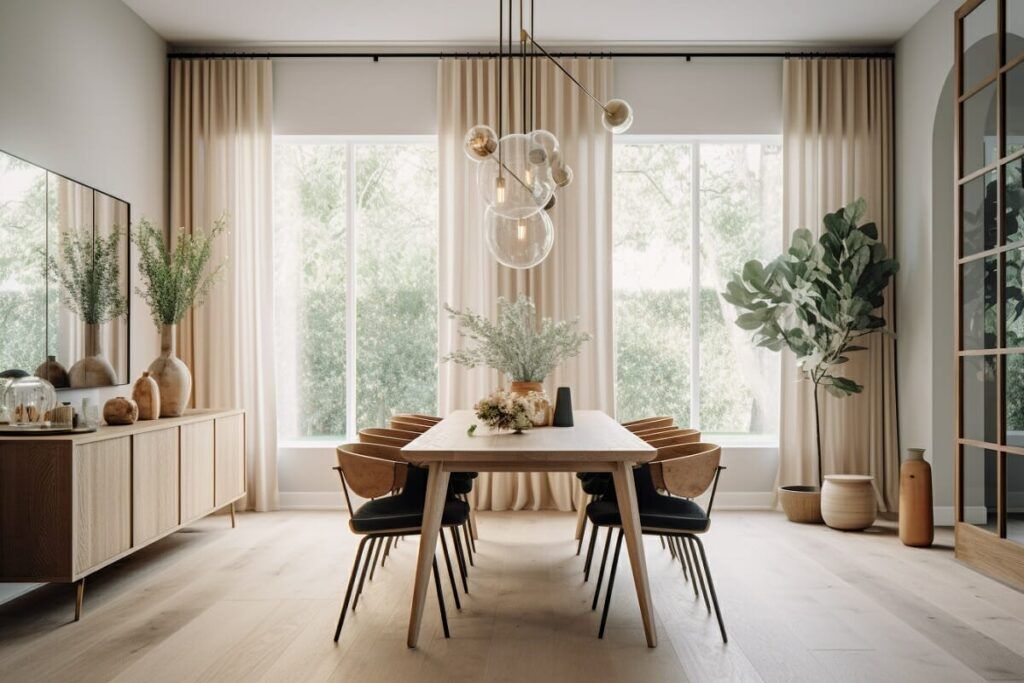Key Takeaways
- Tracing the cultural and functional progression of dining rooms throughout history.
- Examining the substantial effect of various design movements on dining room aesthetics.
- Discovering how current design considerations, like sustainability and technological integration, are shaping dining rooms.
- Foreseeing future trends in dining room design that cater to personalization and space optimization.
The dining room, a quintessential part of our homes, has evolved considerably from its origins. Initially serving a basic need for communal eating, it has grown into a space that exudes personal style and responds to environmental concerns. It’s no longer just about dining tables and chairs but about creating a cohesive ambiance that speaks to our heritage and modern sensibilities—where pieces such as Amish dining room furniture balance artisanal beauty and contemporary design. Whether renovating an existing space or searching for inspiration for a new one, studying the dining room’s evolution over time can inspire practical and aesthetically pleasing ideas. Let’s explore the significant shifts and trends that have shaped and continue shaping the dining home’s heart.
Design Movements Influencing Dining Room Furniture
The journey of the dining room through various design movements indicates the changing tastes and ideals in society. From the heavy mahogany tables of Victorian times to the sleek forms of the Bauhaus movement, each era’s dining furniture directly reflected its design values and technological capabilities. These movements affected not only the aesthetics of the dining room but also its functionality, with each period contributing new forms and innovations to furniture making. This has culminated in a contemporary understanding of furniture that values both form and function—seen in the sleek lines of modern designs and the enduring appeal of craft-centric pieces.
Modern Dining Room: A Blend of Old and New
The contemporary dining room is an eclectic space ripe with possibility. While some homeowners cherish the past, others look to cutting-edge design for inspiration. The results are engagingly diverse dining areas, each with its personality. Minimalist chairs surround an antique mahogany table, or a rustic farmhouse table could be set beneath a sleek, industrial-style light fixture. These spaces also reflect a growing cultural diversity and willingness to mix design elements from different periods and origins. This fusion has become the signature of today’s dining room.
Dining Room Furniture: A Focus on Sustainability
In the current era—marked by environmental challenges and an emphasis on sustainability—the quest for eco-friendly furniture has become paramount for many homeowners. The use of organic materials, non-toxic finishes, and sustainable harvesting practices are essential considerations for conscious consumers. Sustainable dining room furnishings have experienced a surge in popularity. These pieces, constructed with care and intended to last generations, also come with the advantage of timeless design, sidestepping the cycle of trends and disposability.
Minimalism vs. Maximalism in Dining Room Trends
The trends in dining room design are constantly shifting between minimalism and maximalism. The minimalist design promotes a sense of calm and order in the dining room, which can be a welcome respite from the chaos of modern life. On the other hand, maximalism encourages bold and colorful expressions of personal style, creating an eclectic and vibrant space for entertaining guests. Ultimately, it’s up to each homeowner to decide which design approach best reflects their personality and preferences for their dining space.
Small Spaces and Dining Rooms: Making the Most of What You Have
Space constraints in urban environments pose unique challenges, pushing designers and homeowners alike to innovate within the bounds of their dining areas. Efficiency becomes critical, with multifunctional furniture, expandable tables, and clever storage solutions being the heroes in these small dining spaces. These constraints often lead to bursts of creativity that transform limited square footage into intimate, multi-purpose rooms that accommodate dining, working, and socializing in ways that a more prominent space might not necessarily encourage.
Future Trends: What’s Next for Dining Room Design?
Future trends in dining room design show an exciting landscape where customization and transformation are at the forefront. We can expect to see more innovation in modular furniture systems and materials made using state-of-the-art ecological processes. Additionally, as our lives become more digital, we may see more tech integration in the dining room to enhance the communal experience of the meal rather than causing distraction. Voices from the design world support the emergence of these trends. In summary, the modern dining room is both a legacy space and one of constant innovation. It is where everyday meals are enjoyed, special occasions celebrated, and memories made.


